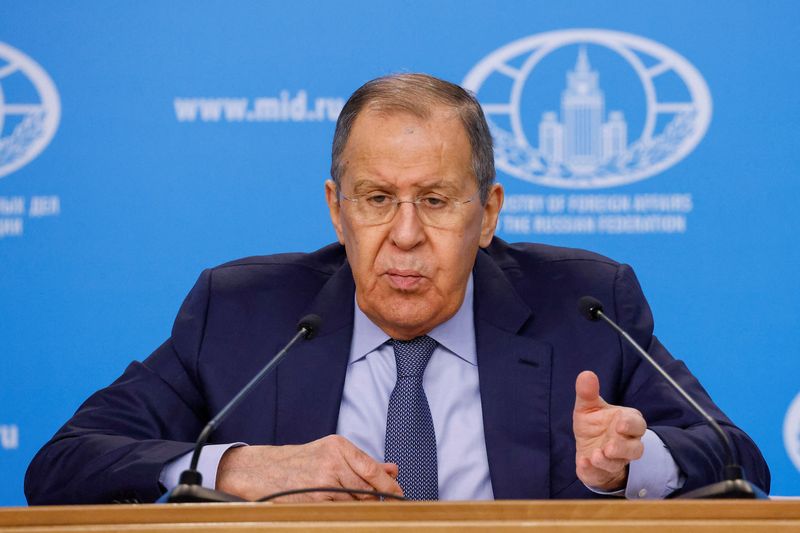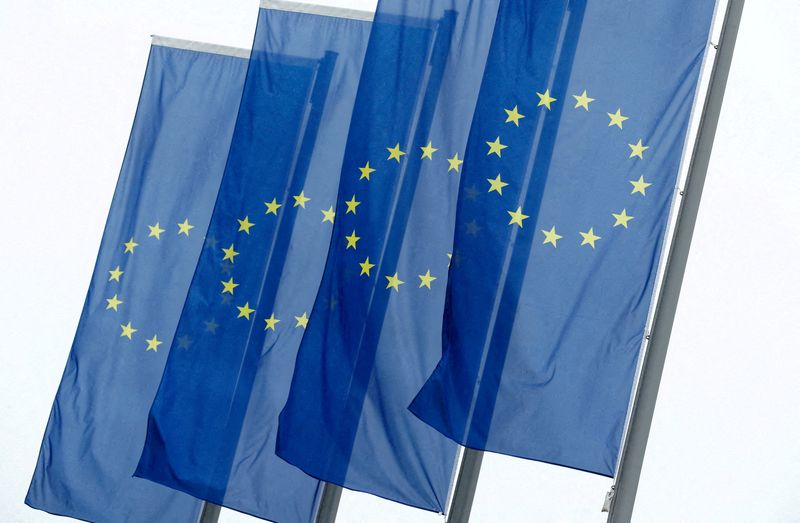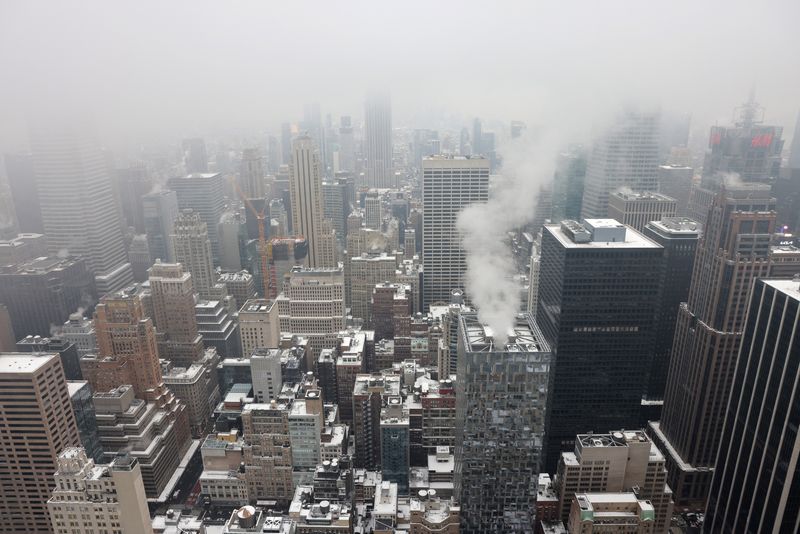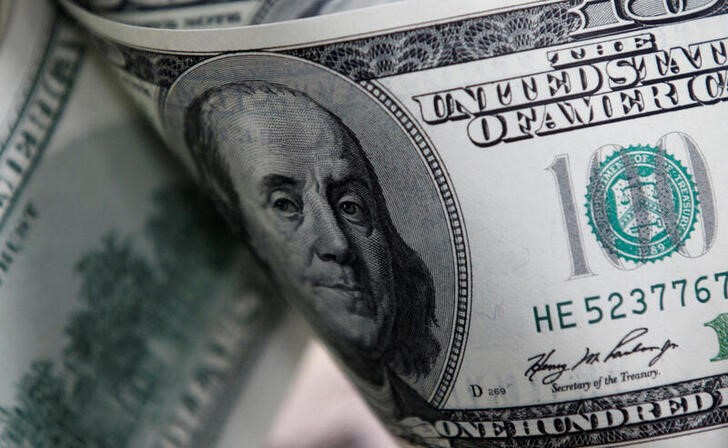Select Language

By Satoshi Sugiyama
TOKYO (Reuters) - Core consumer inflation in Japan's capital Tokyo in January likely fell below 2% for the first time since May 2022, a Reuters poll of economists showed on Friday, reinforcing the view that price pressures are easing.
The core consumer price index (CPI) in Tokyo, a leading indicator of nationwide inflation trends was expected to have climbed 1.9%, according to a median estimate of 18 economists, attributed to a slower increase in energy and food prices. That would follow a 2.1% jump in December.
"The rate of increase in the core index is expected to slow further as food price hikes have subsided and the upward contribution of accommodation prices is expected to contract," said Takumi Tsunoda, senior economist at Shinkin Central Bank Research Institute.
Japan's December core inflation was above the Bank of Japan's 2% target at 2.3% growth but its pace slowed for a second straight month, government data showed on Friday.
Meanwhile, the poll estimated Japan's exports likely swung back to expansion in December, rising 9.1% from the same month a year earlier. That compared with a 0.2% contraction in November.
December imports are seen down 5.3% from a year earlier after a 11.9% decrease in the previous month, resulting in a trade deficit of 122.1 billion yen ($824.05 million), the poll showed.
The government will release the Tokyo CPI data on Jan. 26 at 8:30 a.m. Japan time (Jan. 25 at 2330 GMT) and trade data on Jan. 24 at 8:50 a.m. Japan time (Jan. 23 at 2350 GMT).
($1 = 148.1700 yen)

MOSCOW/WASHINGTON (Reuters) -Russia on Thursday publicly rejected U.S.-Russian arms control talks for now because of U.S. support for Ukraine, a stance Washington said cast doubt on Moscow's openness to a successor to the last treaty limiting their strategic nuclear arsenals.
Russian Foreign Minister Sergei Lavrov told reporters that Washington had proposed separating the issues of Ukraine, which Russia invaded in 2022, sparking a nearly two-year war, and the resumption of "strategic stability" talks on arms control.
But Lavrov said the U.S. proposal was unacceptable to Russia because of the West's backing for Ukraine and accused the West of conducting a "hybrid war" against Moscow. However, he did not rule out the possibility of future arms control talks between the two, which possess the world's largest nuclear arsenals.
"We do not see the slightest interest on the part of either the United States or NATO to settle the Ukrainian conflict and listen to Russia's concerns," Lavrov told a news conference, though he left the door open to Moscow's position evolving.
"We do not reject this idea for the future, but we precondition this possibility on the abandonment by the West of its policy of undermining and not respecting Russia’s interests," he said.
In Washington, a senior White House official said Russia may change its mind as the February 2026 expiration of the New START treaty approaches, though he said there were no guarantees. The treaty limits deployed strategic nuclear arsenals of both nations.
"We have to take Russia at its word ... They're refusing to engage bilaterally on these issues," Pranay Vaddi, senior director for arms control at the White House national security council, said in response to a question at a think-tank event on Thursday. "It casts some doubt on Russia's willingness to entertain a conversation about a New START follow-on or returning to New START compliance."
"I think that they will want to come back to the table at some point, and ideally before expiration, but Russia could also be unpredictable," Vaddi added.
New START's lapse would leave the two nations with no nuclear arms agreement at a time when tensions between them are at the highest point since the Cuban missile crisis of 1962.
Lavrov accused the West of pushing Ukraine to use increasingly long-range weapons for strikes deep inside Russia. Such strikes have intensified in recent weeks, including an attack on the southern city of Belgorod that killed 25 people on Dec. 30.
Lavrov did not provide evidence for his assertion that the West was encouraging Ukraine to carry out such strikes but accused the United States of seeking military superiority over Russia.
Signed in 2010, the New START treaty caps the number of strategic nuclear warheads that the countries can deploy. Under its terms, Moscow and Washington may deploy no more than 1,550 strategic nuclear warheads and 700 land- and submarine-based missiles and bombers to deliver them.

By Tom Westbrook
SINGAPORE (Reuters) - The dollar headed for a second weekly gain in a row on Friday on signs of resilience in the U.S. economy and caution about rate cuts from central bankers.
Weekly gains on the risk-sensitive Australian and New Zealand dollars of 1.7% and 2.1% are set to be the largest since November and June respectively. Markets price a 57% chance of a U.S. rate cut in March, down from 75% a week ago.
The dollar index is up 0.9% to 103.4 on the week and at 148.12 yen the dollar is up almost 5% on the Japanese currency this year as confidence that the Bank of Japan (BOJ) is about to hike rates has also been rattled.
Data on Friday showed Japan's core inflation slowed to 2.3% in the year to December, its lowest annual pace since June 2022 - seemingly vindicating policymakers' wait-and-see approach.
"The market's realisation that rates hikes will not be easy for the BOJ in the coming months and the coincident repricing of Fed rate cut risks have already been reflected in the move higher in dollar/yen," said Rabobank strategist Jane Foley.
Rabobank revised its one-month forecast for dollar/yen to 148 from 144, expecting further unwinding of bets on the pace of U.S. rate cuts to support the dollar.
Currency moves early in the Asia session were modest on Friday, leaving the euro down 0.7% for the week at $1.0878 and sterling down 0.3% to $1.2708.
The Aussie caught a little support from stabilising iron ore prices and rose 0.1% to $0.6578. The kiwi was steady at $0.6118. [AUD/]
Overnight U.S. labour-market data was strong, with weekly jobless claims dropping to their lowest level in nearly 1-1/2 years, adding to the pressure on market rate-cut wagers.
Two-year Treasury yields, which track short-term interest rate expectations, are up 22 basis points this week to 4.3587%. [US/]
Earlier data showed retail sales rose more than expected in December. Federal Reserve Governor Christopher Waller said on Tuesday the U.S. economy's strength gives policymakers flexibility to move "carefully and slowly" which traders took as pushing back at pricing for a speedy fall in rates.
A similarly hawkish chorus from European central bankers has also dialled back expectations for cuts in Europe, limiting the euro's fall on the dollar and driving gains for crosses such as euro/yen and euro/swissy.
An unexpected rise in British inflation also drove a sharp pullback in bets on Bank of England interest rate cuts, and leant support to sterling.
Bitcoin hit a five-week low at $40,484 overnight as traders have taken profits following the U.S. approval of spot bitcoin exchange-traded funds. Speculators drove the price 150% higher during 2023 in anticipation that the approval paved the way for large-scale investors to buy the cryptocurrency.

By Leika Kihara
TOKYO (Reuters) - The Bank of Japan is likely to maintain its ultra-loose monetary settings next week, putting the focus on any hints Governor Kazuo Ueda drops about when the central bank will boost short-term interest rates out of negative territory.
As many policymakers want to spend a few more months determining whether wage increases will broaden enough to keep inflation sustainably at the BOJ's 2% target, markets now expect a rate hike in March or April at the earliest.
While the BOJ likely has its eyes set on ending negative rates, four people familiar with the central bank's thinking said there were plenty of benefits to holding fire at least until its April 25-26 meeting.
Surveys and comments from business lobbies have shown an increasing chance Japan's spring wage hikes will be above last year's 30-year high 3.58% for major firms - a key prerequisite Ueda has set for exiting ultra-loose monetary policy, which is an outlier among major central banks.
Many BOJ policymakers want to check whether the increases will become more widespread and prod companies to pass on higher labour costs via price hikes, particularly for services, the sources told Reuters.
That is in line with a Reuters poll of analysts, who unanimously forecast the BOJ would keep its short-term interest rate target at minus 0.1% and that for the 10-year government bond yield around 0% at the two-day meeting ending on Tuesday. Ueda will hold a press conference after the decision. Those usually start around 0630 GMT.
With easing cost-push pressure slowing inflation back towards its 2% target, the BOJ can afford to await more data, such as the outcome of the annual wage talks between big firms and unions in mid-March, said the sources, asking not to be identified because of the sensitivity of the matter.
NO 'RUSH TOWARDS THE EXIT'
"The possibility of the BOJ being behind the curve in addressing inflationary risks is small, one source said, echoing the view of two others. "There's no pressure to rush towards the exit," another source said.
In quarterly projections due after the meeting, the BOJ board is expected to cut its core inflation estimate for the fiscal year starting in April but roughly maintain its forecast for trend inflation to stay near 2% in coming years, sources have told Reuters.
With inflation running above the BOJ's 2% target for more than a year, many market players expect the bank to start phasing out its massive stimulus this year.
But investors trimmed bets of a January tightening after a New Year Day's earthquake devastated parts of central Japan and Ueda said in a recent interview that he was in no rush to unwind ultra-loose policy.
Among the reasons the BOJ could wait at least until April is that the board will publish its initial forecasts for fiscal 2026 after that meeting, which could help justify a policy shift by predicting long-run inflation of around 2%.
In addition to the wage talks, the bank would also be able to take into account the economic and market fallout from a possible interest rate cut by the U.S. Federal Reserve.
Former BOJ executive Eiji Maeda expects the BOJ to end negative rates in April if it foresees inflation staying around its 2% target through fiscal 2026.
"We're clearly seeing changes in Japan's price moves", with Japan shaking off a 25-year-old deflationary mindset, Maeda said. "A sustainable, domestically driven rise in inflation is already kicking off."

By Prerana Bhat
BENGALURU (Reuters) - The European Central Bank will reduce interest rates next quarter, according to a Reuters poll, with 45% of respondents saying the reduction in borrowing costs would happen in June.
The poll, which was released on Thursday, also showed the first ECB rate cut was more likely to occur earlier than expected than later.
As inflation moves closer to the ECB's 2% target, the next move is almost certainly a cut, but the timing is still up for debate.
Investors are currently pricing in around 150 basis points of cuts this year, with the first reduction expected in April, despite pushback by some members of the central bank's Governing Council against the aggressive easing calls.
While economists also expect the first rate cut next quarter, they differ from financial markets on the timing.
All 85 respondents in the Jan. 12-17 Reuters poll predicted the ECB would leave its deposit rate at 4.00% on Jan. 25. The central bank will cut rates in the second quarter, said 59 of 85 economists in the poll. Three saw a cut happening in March.
The more than 70% of respondents in the latest poll calling for rate cuts before July compared to around 57% who said the same thing in a December poll. As recently as November, 55% expected no easing until at least the second half of the year.
A significant minority in the latest survey, 38 of 85, said the first ECB cut would come in June. Twenty one said April, and 23 predicted it would occur in the third quarter and beyond that period.
More than 60% of respondents who answered a separate question - 27 of 43 - said the first cut was more likely to come earlier than they expected. The remaining 16 said later.
"If you're hearing the ones (policymakers) that are the most talkative out there, which are the hawks ... almost all of them have been pushing against the possibility of an ECB rate cut at least in the coming months," said Jennifer Lee, senior economist at BMO Capital Markets.
"But stranger things have happened, so I wouldn't be surprised if they do an earlier rate cut. Our view is still that they're going to go in June, so we'll stick to that in the meantime."
The median expectation was for 100 basis points of cuts this year, taking the ECB's deposit rate to 3.00% by the end of 2024. While 36 of 85 economists forecast the rate would be higher than that, 27 predicted a lower level.
When asked what was more likely on the magnitude of ECB rate cuts this year, 25 of 42 said bigger than they expected. The rest said smaller than they expected.
Headline inflation, at 2.9% in December, will fall to the central bank's 2% mandate in the second half of this year, the survey showed.
Upside risks, however, remain as ECB President Christine Lagarde said the central bank is on track to get inflation back to its 2% target, but that the battle has not yet been won.
Sixty-eight percent of economists, 26 of 38, who answered a separate question said the risk of a significant resurgence in euro zone inflation over the coming six months was low, with 12 saying it was high.
"A significant resurgence in inflation is conceivable only in case of new supply shocks. The more important risk is inflation turns out to be more sticky than expected, especially due to wage pressures," said Kristian Toedtmann, senior economist at DekaBank.
The 20-country euro zone was predicted to have entered a winter recession after it shrank 0.1% in the third quarter and was expected to have contracted at the same rate in the fourth quarter.
It would still be a shallow recession, as even the most pessimistic forecast pegs the economy to have contracted just 0.3% in the fourth quarter.
The German economy, which is Europe's largest, shrank in 2023 but still dodged a recession. It was expected to grow 0.3% this year and 1.2% in 2025, the latest poll showed, slower than predicted three months ago.
(For other stories from the Reuters global economic poll:)

By Julia Harte and Rich McKay
NEW YORK (Reuters) -Millions of Americans awoke on Tuesday to snow, freezing rain and frigid temperatures as an Arctic blast gripped much of the United States, ending a nearly two-year "snow drought" in New York City and putting much of the West into a deep freeze.
Record-breaking cold was expected across the Rocky Mountains, Great Plains and Midwest, with wind chills below minus 30 degrees Fahrenheit (minus 34 degrees Celsius) reaching the mid-Mississippi Valley in the morning.
The lowest temperature in the country on Tuesday morning was -36 F (-38 C) in the small Colorado town of Briggsdale, population 134.
"That's crazy," Katie Sizemore, a barista at the Blue Mug Coffee Bar in Greeley, Colorado, said when told she was near the coldest spot in America.
Greeley, about 30 miles (50 km) south of Briggsdale, was about 13 degrees warmer than its neighbor to the north, but Sizemore said the locals were nonetheless bracing for the cold by dressing in extra layers and cranking up heaters.
"We don't go outside for very long," she said.
In New York City, which had not received more than an inch (2.5 cm) of snow in almost two years, residents woke up to see a winter wonderland outside their windows. Manhattan's Central Park was covered by 1.4 inches (3.6 cm) as of Tuesday morning, ending a "snow drought" of 701 days without more than a dusting.
"The streak has ended!" the National Weather Service's New York office posted on Facebook (NASDAQ:META), prompting users to comment on what most saw as a welcome surprise.
Overnight, 4 to 5 inches (10 to 13 cm) of powder painted Washington, D.C., white, while 2 to 3 inches (5 to 8 cm) fell in Baltimore and Philadelphia.
An additional 2 to 4 inches (5 to 10 cm) were expected throughout New England, extending into New York state, before a brief midweek reprieve from the frigid weather, the weather service said.
Buffalo, New York, received 1 to 3 feet (30 to 91 cm) of snow overnight on top of 3 feet that fell over the weekend. The weather service issued a "lake effect" snow warning on Tuesday for much of western New York that will remain in effect until Thursday evening.
Such snowfall is typical of western New York in the winter, when the unfrozen waters of the Great Lakes mix with icy air in the upper atmosphere, forming clouds that rapidly produce snow, according to the weather service.
Snow also blanketed the Appalachians and Western North Carolina, with Southern states experiencing unusual cold snaps, according to Bob Oravec of the weather service's Weather Prediction Center in College Park, Maryland.
Nashville, Tennessee, "which doesn't see a lot of heavy snow," received 6 to 8 inches (15 to 20 cm), Oravec said. Residents of Mobile, Alabama - in the heart of the Deep South - woke up to freezing rain and a rare 31 F (-0.5 C).
DEATHS AND DISRUPTIONS
Nationwide, at least five people have died as a result of the weather since the weekend, including two from hypothermia in recent days in Oregon, local media reported.
A series of major power outages this weekend were mostly fixed, but more than 50,000 customers were without electricity in Oregon on Tuesday morning. Tens of thousands were in the dark in Lousiana, Texas, and Alabama, according to data from PowerOutage.us.
The operator of the Texas power grid asked the state's residents to conserve electricity on Tuesday morning due to high demand amid the winter storm.
More than 3,000 flights into, out of, or within the United States were canceled or delayed, with Houston's George Bush Intercontinental Airport and New York's LaGuardia Airport experiencing some of the worst disruptions, according to flight-tracking website FlightAware.com.

DAVOS - At the recent gathering of global leaders and business executives at the World Economic Forum in Davos, high-profile industry figures discussed the transformative impact of Artificial Intelligence (AI) on various sectors, highlighting both its potential for innovation and inherent risks.
Bill Gates, underscored the dual nature of AI, pointing out that while it holds great promise for technological advancements, it also brings significant challenges such as the increased risk of cyberattacks and bioterrorism. This sentiment reflects a growing awareness of the need to balance AI's benefits with robust security measures.
Adena Friedman, CEO of Nasdaq, projected optimism for AI-centric firms, anticipating an uptick in their presence in public markets. This suggests a trend of growing investor interest in companies that are at the forefront of AI technology.
Meta (NASDAQ:META)'s Vice President for Europe, the Middle East, and Africa, Nicola Mendelsohn, shared insights into the practical applications of AI within the company. She highlighted the improvements in advertiser targeting as a result of Meta's AI products, indicating the potential for AI to enhance marketing strategies and business outcomes.
Hans Vestberg, CEO of Verizon (NYSE:VZ), focused on the role of generative AI in telecommunications. He emphasized its capacity to enable quick decision-making at the network edge, which is crucial for the development of real-time applications and services.
This article was generated with the support of AI and reviewed by an editor. For more information see our T&C.

By Casey Hall
SHANGHAI (Reuters) - The night before China's civil service exam, Melody Zhang anxiously paced up and down the corridor of her dormitory, rehearsing her answers. Only when she got back to her room did she realise she had been crying the whole time.
Zhang was hoping to start a career in state propaganda after more than 100 unsuccessful job applications in the media industry. With a record 2.6 million people going for 39,600 government jobs amid a youth unemployment crisis, she didn't get through.
"We were born in the wrong era," said the 24-year-old graduate from China's top Renmin University.
"No one cares about their dreams and ambitions anymore in an economic downturn. The endless job-hunting is a torture."
A crisis of confidence in the economy is deterring consumers from spending and businesses from hiring and investing, in what could become a self-feeding mechanism that erodes China's long-term economic potential.
China grew 5.2% last year, more than most major economies. But for the unemployed graduates, the property owners who feel poorer as their flats are losing value, and the workers earning less than the year before, the world's second-largest economy feels like it's shrinking.
Zhu Tian, economics professor at China Europe International Business School in Shanghai, says the textbook definition of a recession - two consecutive quarters of economic contraction - should not apply to a developing country investing roughly 40% of its output annually, twice the level of the United States.
"We're in a recession," Zhu said. "If you talk to 10 people, seven will say we've had a bad year."
"I don't think the government can afford that. This cannot go on forever," he said, urging more stimulus measures to break out what could be a "vicious cycle" of low confidence that will affect young people entering the job market in particular.
VANISHING ASPIRATIONS
More than one in four of the roughly 100 million Chinese aged 16-24 were unemployed in June, the last data point before officials suspended the series. China resumed publication of the data on Wednesday, excluding college students from it, to put youth unemployment at 14.9% in December.China's Generation Z is the most pessimistic of all age groups, surveys show.
Those who find jobs earn less than they expect as businesses cut costs in response to poor domestic demand. Recruiter Zhaopin found the average salary employers offered in China's 38 biggest cities fell by 1.3% year-on-year in the fourth quarter.
For an economy which expanded roughly 60-fold in dollar terms since the 1980s, this is a historical shift in mood. That success was achieved largely through gigantic investments in manufacturing and infrastructure, but that model began producing more debt than growth about a decade ago, with total borrowing now reaching levels China struggles to service.
Meanwhile, China trained its students for high-skilled jobs in the services sector rather than factory or construction work. Subdued household consumption and regulatory crackdowns on the finance, tech and education industries have diminished their opportunities.
Janice Zhang, 34, had worked in the tech industry until late 2022 when she quit to handle a family emergency, confident she could easily find a new job given her experience and U.S. education.
But Zhang only found a social media marketing position, where she was expected to put in 15-hour shifts, so she quit after a short while.
The state of the economy makes her feel like a "grain of sand on the beach," unable to control her own destiny, she said.
"In China, this word 'aspiration' has been driving everyone, because they believed tomorrow will be the best time. What I'm trying to conquer in my life now is, in a way, healing the disappointment tomorrow is going to bring."
PROPERTY CRISIS
Vincent Li, the owner of a high-end coffee shop in Shanghai, took a one-two punch that he says knocked him out of the middle class.
As Chinese cut spending, they prefer cheaper coffee. And the two apartments he bought for 4 million yuan ($558,612) in 2017 on the touristy Hainan island haven't attracted any renting or buying interest in three years.
"The property market is saturated," Li said.
In China, 96% of the roughly 300 million urban households owned at least one apartment in 2019, according to the latest central bank data. A third owned two, and a tenth owned more.
About 70% of household savings are invested in property.
In some cities, apartments have lost two thirds of their value since the real estate market downturn began in 2021, property agents said, making their owners feel less wealthy and slash their spending.
The property sector, which accounted for roughly a quarter of economic activity at its peak, is now seen as a key threat to China's attempts to escape the middle-income trap.
"The big risk is that the fallout from diminishing old growth sources could become too large to contain and inhibit new growth sources. If that happens, China could become stuck in transition," said Yuen Yuen Ang, Alfred Chandler Chair of Political Economy at Johns Hopkins University.
It is not just domestic policies impacting life in China. Diplomatic tensions with the West over Taiwan, Ukraine and the South China Sea have contributed to its first ever foreign investment deficit.
Trade bodies have raised alarm over raids on consultancies and due diligence firms and exit bans, among other issues.
U.S. tech restrictions on China prevent David Fincher's consultancy in Shanghai from doing business in leading-edge semiconductors, blocking off a key source of income.
He is considering moving overseas, fearing more diplomatic tensions or new regulatory shifts from Beijing could make his business untenable.
"You feel like a lobster in a pot," Fincher said. "The water gets hotter and you just kind of sit there."
"I worry about Beijing as much as everybody else."
($1 = 7.1606 Chinese yuan renminbi)

By Lisa Barrington
SEOUL (Reuters) - More manufacturers are seeking to fly their products in the next few weeks as attacks on Red Sea shipping force them to find alternate routes, logistics firms say, a potential boon for a sector dealing with muted post-pandemic demand and overcapacity.
The Red Sea, which leads to the Suez canal, lies on the key east-west trade route from Asia's manufacturing hubs to Europe and onto the east coast of the Americas. About 12% of world shipping traffic accesses the Suez Canal via its waters.
But more than two months of attacks by Yemen's Houthi militia on ships in the region have affected companies and alarmed major powers in an escalation of Israel's war with Palestinian Hamas militants in Gaza.
While air freight prices have so far remained relatively stable as the shipping crisis coincides with a seasonal lull in demand, data from freight booker Freightos showed rates on a China-to-Europe route had surged 91% week-on-week on Sunday.
Price reporting agency TAC Index also said there were signs of an uptick in China-to-Europe air freight rates this week.
"We are talking to many customers already about increased air capacity," said Yngve Ruud, head of Air Logistics at global logistics firm Kühne+Nagel. "We have probably 20-30% more discussions and proposals than usual in January."
Air freight is costly compared to sea freight, and not competitive for bulky, low-margin items. Such constraints have limited air cargo to less than 1% of global trade by volume, according to airline industry association IATA.
But since the attacks, which have forced shippers to take costlier routes that can add weeks to delivery times, air freight has become a more attractive option.
Korean Air Cargo, one of the world's largest carriers by volume, said it was starting to see an increase in demand and more customer inquiries.
Several logistics firms including Germany's Schenker, France's Bollore Logistics and US-based C.H. Robinson are also securing additional air freight space, the companies said, and Chrysler parent Stellantis (NYSE:STLA) said last week it was relying on air freight to cope with temporary disruptions.
"As the price of ocean goes up, as the transit times increase, and as backlogs build up, that's when shippers start to get very concerned that they won't have their spring inventory," said Neel Jones Shah, chief customer officer at digital freight forwarder Flexport.
"The first thing you're going to see convert is shippers that do 20% air 80% ocean for the same product, go to 50:50."
MULTI-MODAL OPTIONS
A slowdown in the global economy has helped to mute the impact on trade flows from the attacks by the Iran-aligned Houthis, who say they are acting in solidarity with the Palestinians in Gaza.
The Baltic Air Freight Index, which shows general cargo weekly transactional rates, has fallen since early December and was down 34% last week from a year ago. Global cargo demand was down 2.5% in November from the same month before the pandemic, while capacity increased 4.1%, according to IATA.
Logistics sources say customers are increasingly looking into multi-modal routes, shipping by sea into the Middle East, for example, and then onwards to Europe by air.
Kühne+Nagel said some customers have started sending containers to Dubai and Los Angeles and then flying the goods onwards to their destinations.
Asia-focused freight forwarder Dimerco also said customers were calculating costs for sea-air combinations via Dubai as well as direct air freight services.
Air, however, still remains an option, rather than the default, as customers hold off on committing amid sluggish demand and as many factories in manufacturing hub China prepare to close for the Lunar New Year holiday in February, Dimerco spokesperson Alvin Fuh added.
But the longer the Red Sea crisis continues, the more manufacturers will turn to air freight, shippers said.
"The longer the situation persists, the more pressure is added to sea freight capacity and customers' supply chains, thereby going closer and closer to the 'tipping point' for a need for air freight conversion," said Jack Liu, Senior Vice President of Air Logistics at Kühne+Nagel Asia Pacific.

By Brigid Riley
TOKYO (Reuters) -The dollar index hovered at a one-month high against a basket of currencies on Wednesday as remarks by Federal Reserve Governor Christopher Waller dampened expectations for a March rate cut.
Meanwhile, China's offshore yuan inched up after data showed the world's second largest economy grew enough in the fourth quarter in 2023 to meet the country's annual growth target.
In Fed news, Waller said that while the U.S. is "within striking distance" of the Fed's 2% inflation goal, the central bank should not rush towards cuts in its benchmark interest rate until it is clear lower inflation will be sustained.
Market expectations of a rate cut in March have eased to a 62.2% chance versus an 76.9% view in the prior session, according to CME's FedWatch Tool.
While the market's latest pricing brings the Fed rate curve into more sensible territory, "with 157 basis points of rate cuts still priced in for 2024, there is room for this to ease back," said Tony Sycamore, market analyst at IG.
Remarks by European Central Bank (ECB) President Christine Lagarde later on Wednesday could bring further repricing, he added.
"Rate cuts are coming but not as soon as some might be hoping for," Sycamore said.
The dollar index, a measure of the greenback against a basket of major currencies, last stood at 103.32 after climbing as high as 103.42 during the previous session, its highest level since Dec. 13. Tuesday also saw the dollar's biggest one-day percentage gain since Jan. 2.
In China, official data showed the economy grew 5.2% in the fourth quarter from a year earlier, slightly missing analysts' expectations but still making it possible for Beijing to meet its annual growth target despite a shaky start to the year.
The offshore Chinese yuan ticked up slightly to 7.2092 per dollar immediately after the data release.
The Australian dollar, often used as a liquid proxy for the yuan, was mostly flat at $0.65825, while the kiwi was up 0.1% at $0.6144.
Meanwhile, the euro was hanging near a one-month low at $1.08765 after its steepest one-day percentage drop in two weeks, following comments from several ECB policymakers this week that maintained uncertainty over the timing of rate cuts.
Sterling was last trading largely unchanged at $1.2641, after a sharp fall on Tuesday in the wake of data that showed British wage growth slowed in the three months through November.
The yen was under some pressure again as U.S. bond yields ticked up to support the greenback. The Japanese currency stood at 147.21 per dollar, just off its lowest since Dec. 6 at 147.49 hit earlier in the session.
The move in dollar/yen overnight was a "reminder that US Treasury yields remain a big influence on JPY with the (Bank of Japan) likely on the sidelines until at least March (and in our view more likely until mid year)," Rodrigo Catril, senior currency strategist at National Australia Bank (OTC:NABZY), wrote in a note.
In cryptocurrencies, bitcoin was down 0.96% to $43,013.00.

